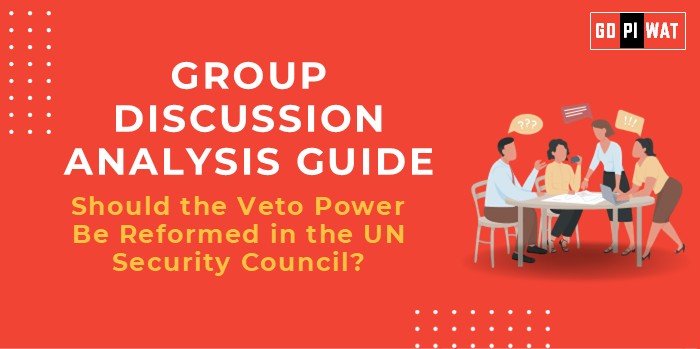📋 Group Discussion Analysis Guide: Should the Veto Power Be Reformed in the UN Security Council?
🌐 Introduction to the Topic
📖 Opening Context
The veto power in the UN Security Council (UNSC) has been a cornerstone of global governance since its inception in 1945, granting the five permanent members (P5)—China, France, Russia, the UK, and the USA—disproportionate influence over international peace and security.
📜 Topic Background
Designed to prevent unilateral action and maintain post-WWII order, the veto power has often been criticized for enabling geopolitical biases, stalling critical decisions, and reflecting outdated power dynamics.
📊 Quick Facts and Key Statistics
- 📜 Veto Frequency: Over 300 vetoes cast since 1945, with Russia and the USA leading in usage.
- 🌍 Membership Imbalance: The P5 represents 27% of the global population but holds 100% veto rights.
- ⚔️ Blocked Actions: 15 resolutions blocked by Russia over Ukraine since 2014.
- 📈 UN Reform Support: 73% of member states back UNSC reform (UNGA survey, 2023).
🤝 Stakeholders and Their Roles
- 🏛️ P5 Members: Defend veto rights as essential to their sovereignty and global order.
- 🌐 G4 Nations (India, Brazil, Germany, Japan): Advocate for expansion and equal veto rights.
- 🌍 Developing Countries and Regional Groups: Seek equitable representation and limit veto use.
- 📢 Global Civil Society: Push for democratization and accountability in UNSC decisions.
🏆 Achievements and Challenges
✨ Achievements
- ⚖️ Ensures Checks and Balances: Prevents unilateral military interventions.
- 🤝 Promotes Negotiation: Requires P5 consensus for critical decisions.
- 🌍 Historical Successes: Effective in post-conflict reconstruction (e.g., Korea, Balkans).
⚠️ Challenges
- ⛔ Stalled Actions: Blocked resolutions on Syria and Ukraine highlight deadlocks.
- 🌏 Geopolitical Bias: Decisions often reflect P5 interests over global welfare.
- 📉 Exclusion: Emerging powers and African nations lack representation.
🌍 Global Comparisons
- 📜 League of Nations Failure: Absence of veto led to ineffectiveness.
- 🌐 Reform Models: African Union demands two permanent seats with veto.
📖 Case Studies
- 🇷🇺 Russia’s Veto on Ukraine: Highlighting misuse for geopolitical gain.
- 📢 UNGA’s Resolution Against Veto Abuse (2022): Calls for P5 accountability.
💡 Structured Arguments for Discussion
- 🛠️ Supporting Stance: “The veto power safeguards against hasty global decisions that could lead to widespread conflict.”
- 🛡️ Opposing Stance: “Veto misuse undermines the UNSC’s credibility, favoring national over global interests.”
- ⚖️ Balanced Perspective: “While veto reform is essential for inclusivity, it must ensure P5 cooperation to avoid systemic paralysis.”
🎯 Effective Discussion Approaches
🔑 Opening Approaches
- 📜 “The veto power, while a stabilizing force post-WWII, now symbolizes an unequal global order needing reform.”
- 📊 “With over 300 vetoes since 1945, the system often paralyzes global action on key crises like Syria and Ukraine.”
⚙️ Counter-Argument Handling
- 🔄 Reference cases like Libya, where consensus without vetoes led to action, or propose solutions such as requiring multiple vetoes to block a resolution.
🧠 Strategic Analysis of Strengths and Weaknesses
SWOT Analysis:
- 💪 Strengths: Prevents rash decisions; ensures P5 commitment.
- 🛠️ Weaknesses: Reflects 20th-century geopolitics; enables deadlocks.
- 🌟 Opportunities: G4 inclusion; regional balance.
- ⚠️ Threats: Resistance from P5; risk of gridlock in expanded UNSC.
🏫 Connecting with B-School Applications
📚 Real-World Applications
- 🌍 Case studies in international diplomacy, conflict resolution, and policy analysis.
🎓 Sample Interview Questions
- ❓ “Should emerging powers like India have veto rights?”
- ❓ “How would UNSC reform impact global governance?”
💡 Insights for Students
- 📈 Analyze power dynamics and propose collaborative governance models.


